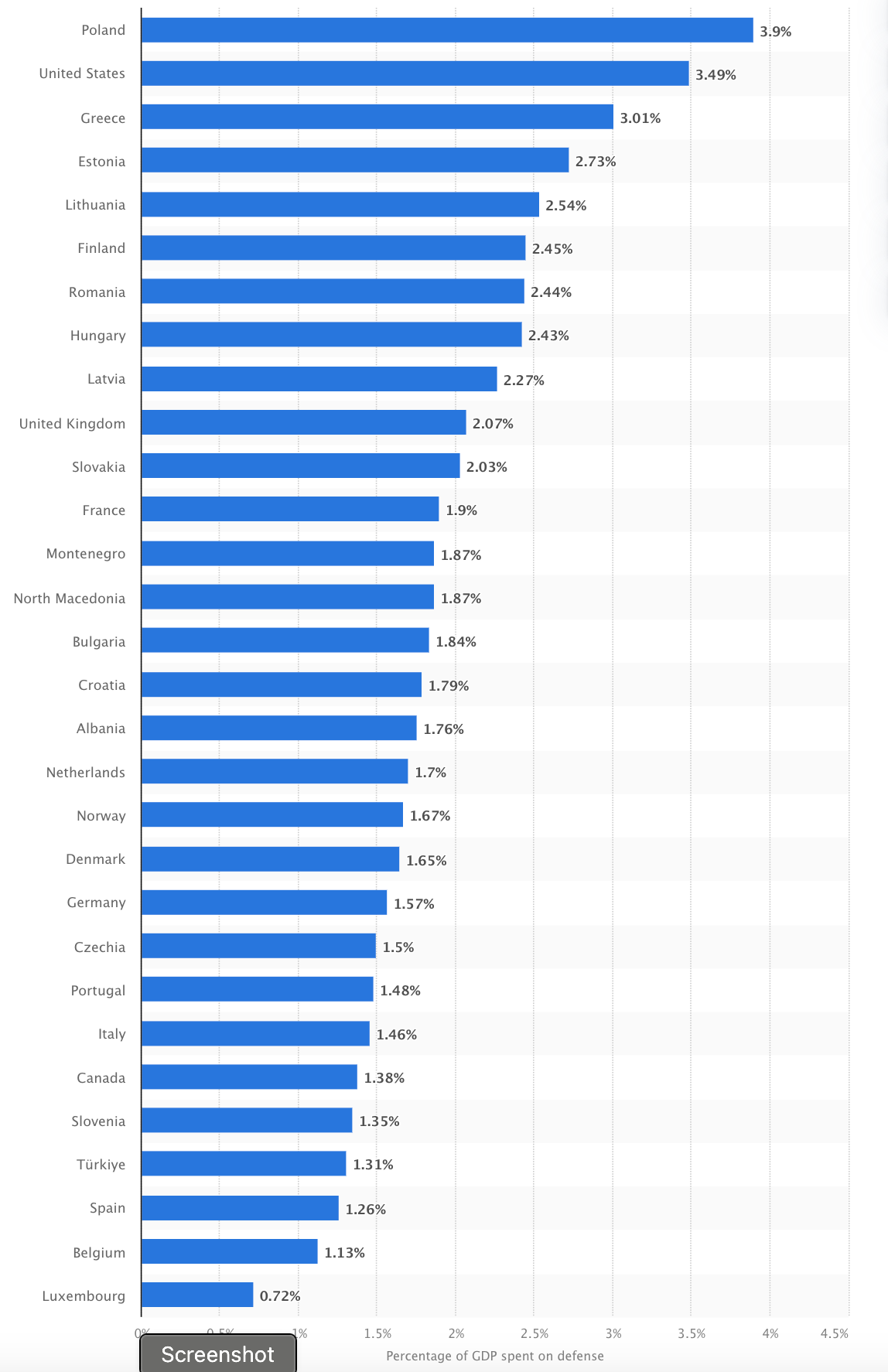2% Keeps on Slipp'n, Slipp'n, Slipp'n, in to the Future
...some friends never pick up the tab...
I have always been someone who is an unabashed fanboi of NATO - I do love it so, but in a mature way.
One does not look away when something you love is doing something destructive or is not living up to its potential. You hold them to a standard.
NATO is overstaffed, and as a result, its documents tend to be wordy, tedious (in English and French), and opaque.
It is a rare professional who can read through a NATO paper on deterrence and defenc(s)e, as eventually you step in to a tar-pit of dispair;
The Defence Investment Pledge, adopted by NATO Leaders at the 2014 Wales Summit, called for all Allies to stop cuts to defence budgets and move towards the NATO-agreed guideline of spending at least 2% of Gross Domestic Product (GDP) on defence within a decade. Allies also agreed, in that same timeframe, to move towards spending at least 20% of annual defence expenditure on new major equipment and related research and development. Since then, Allies have all increased their defence spending, further developed their forces and capabilities, and have contributed to Allied operations, missions and activities. The latest estimates show that defence expenditure by European Allies and Canada will increase by 8.3% in 2023, marking the ninth consecutive year of increased defence spending by these countries, with a cumulative investment of almost USD 450 billion extra in real terms since 2014.
At the 2023 Vilnius Summit, NATO Leaders agreed a renewed Defence Investment Pledge, making an enduring commitment to investing at least 2% of GDP annually in defence. They also affirmed that in many cases, expenditure beyond 2% of GDP will be needed in order to remedy existing shortfalls and meet the requirements across all domains arising from a more contested security order.
So, from Wales on 2014 to Vilnius in 2023, that is what, nine years?
The United States could have fought WWII about what, two and a half times?
Nine years.
Let’s remind everyone of the Salamander-coined measure of time;
Back in 2015 I decided we needed a measure of time for things in the Navy, and settled on a measure of time called a WorldWar;
I think "years" does not really tell the best story about how long it takes to get even the most simple ship to displace water after the "go" is given.
Perhaps we need a new measurement - one that provides context. We need one defined in American terms, natch, and I have an idea.
I've used it before; the time from the attack on Pearl Harbor to the signing ceremony on the Mighty Mo.
That is 07DEC41 to 02SEP45. 3-years, 8-months, 26 days. Including the end date, that is 1,366 days.
On a whole, yes, progress has been made - but before the first month of the new year is done, let’s name names.
There are some very rich freeloaders on that list.
Again, where are the consequences? Yes, regulars here have read this before, but its been a year or so, so you’re going to read it again as we have a few thousand more subscribers who will be reading it for the first time.
We need to finally pursue PLAN SALAMANDER for NATO’s "Flags-to-Posts" that I first proposed almost seven years ago.
In NATO, General and Flag Officer billets are distributed amongst nations in a rather complicated way, but this formula is controlled by NATO – and as such – can be changed.
Entering argument: take the present formula for “fair distribution” and multiply by .75 any nation that spends 1.5% to 1.99% GDP on defense. Multiply by .5 any nation that spends between 1.25% to 1.499%. Multiply by .25 1.0% to 1.240%. If you fall below 1%, you get nothing and your OF5 (Col./Capt) billets are halved.
1.25x for 2.01%-2.25%. 1.5X for 2.26%-2.75%; 1.75x for 2.76% -3.0%. 2x for +3.01%.
With the Russo-Ukrainian War on the brink of starting its 3rd year, there are no excuses.





We might as well start with Canada 🇨🇦 😔
Always been a jobs program. Would be interesting to see it attempt to focus on war fighting